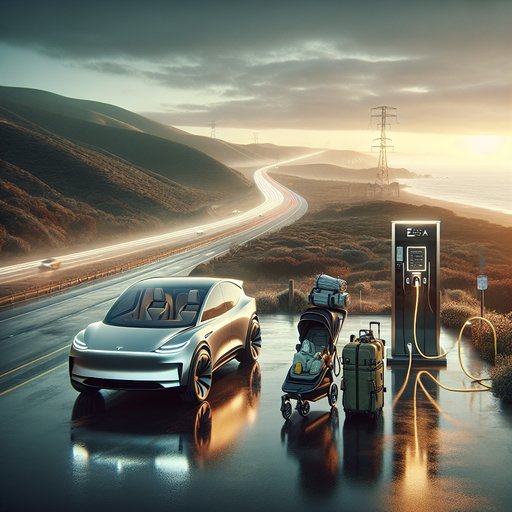
We spent a week and 612 miles with Kia’s new three-row EV9, including school runs, a 250-mile interstate stint, a DC fast-charge session, and a short towing test. Here’s how the GT‑Line AWD handled real family duty, variable spring weather, and the rigors of long-haul EV travel.
Our test car was a 2024 EV9 GT‑Line with dual motors (up to 379 hp and 516 lb‑ft with the Boost feature), the larger 99.8 kWh battery, and e‑AWD. EPA range for this trim is rated at 270 miles. It rides on the E‑GMP 800‑V platform, supports 11 kW AC charging, and is rated to tow 5,000 lb when equipped. Testing covered suburban errands, a fully loaded family highway trip, a 72-mile mountain detour, and a DC fast-charge from 10% to 80%.
Ambient temps ranged from 56–78°F with light winds and intermittent rain. Our car ran on 21-inch all-season tires; we set pressures to placard values before each drive day. In daily use, the EV9’s cabin space is the headline. The second row (ours had captain’s chairs) slides far enough to make the third row viable for average-height adults on short trips.
The flat floor and big doors ease child-seat installs, and visibility is aided by a crisp 360° camera. With all seats up, there’s usable cargo for a grocery run; fold the third row and it swallows bikes and luggage with room to spare. The twin 12.3-inch displays plus a slim climate panel keep learning curve modest, though the touch-capacitive shortcut bar can require an extra glance. Performance skews confident rather than rowdy.
In Normal mode the EV9 launches cleanly and merges without fuss; Sport sharpens response and unlocks the full shove, making two-lane passes brief even uphill. Body control is tidy for a 3-row EV, and ride quality remains composed over broken city streets—firm at the leading edge of bumps but well-damped. Road noise is present on coarse asphalt with the 21s, but wind noise is low at 70 mph. Strong, consistent blended braking is complemented by steering-wheel paddles for four regen levels, including smooth one-pedal driving.
Efficiency landed where expected for this spec: we averaged 2.4 mi/kWh over the week, with a 75 mph highway loop returning 2.1 mi/kWh and suburban errands 2.7 mi/kWh. Our 10–80% fast charge took 27 minutes at a 350 kW station, peaking at 214 kW and holding >150 kW to ~60%. Route planning now integrates charging stops and worked well, though a construction detour prompted a late re-route. At home on a 48A Level 2, expect roughly a full refill overnight (about 10 hours from low state of charge).
A 2,000‑lb utility trailer cut efficiency to 1.4 mi/kWh on a 50‑mile loop, with stable tracking and confident brake control. Driver assistance is polished: Highway Driving Assist keeps centered and manages gentle lane changes with turn-signal confirmation; it can meander slightly through tight construction zones. Seats are supportive over long stints, ventilation is effective, and there are ample USB‑C ports plus a 120V vehicle-to-load outlet for campsite gear. The frunk is small but handy for charge cables.
As a fresh entry in the three-row EV space, the EV9 balances space, charging speed, and price convincingly. If you road-trip often, avoid the largest wheels for better range; if maximum range is the priority, the Long Range RWD (up to 300+ miles EPA) is the sweet spot. Families needing AWD or towing will find the GT‑Line worth the premium. Rivian’s R1S is quicker and more rugged but costs more; Tesla’s Model X is roomier in two rows but less practical in the third.
Overall, the EV9 feels thoroughly engineered for real-life use—not just spec-sheet wins.












